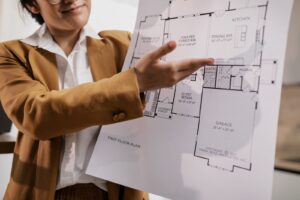
By Steve Lowrie, CFA
Special to Financial Independence Hub
There’s only so much you and I can do about life’s many surprises. Some things just happen, beyond our control. Fortunately, to make the most of your hard-earned wealth, there is one huge and timeless best practice you can control: You can (and should) avoid seeking unbiased financial advice from biased sales staff.
How do you separate solid investment advice from self-interested promotions in disguise? Here’s a handy shortcut: Are the investments coming from your friendly neighborhood banker? If so, please read the fine print — twice — before buying in. Due to inherently conflicting compensation incentives, most banks’ investment offerings are optimized to feed their profit margin, at your expense.
Compensation Incentives Matter … a Lot
I’ve been covering the conflicted compensation beat for years, like in On Big Banks, Conflicting Compensation and Bad Behaviour, and my message has remained the same, for all the same reasons:
Compensation drives behaviour.
It’s human nature. It’s true for Canadian bankers and their investment offerings. It’s also true in the U.S. and around the globe.
For example, a 2017 Consumer Federation of America report, “Financial Advisor or Investment Salesperson?” reflects on this very conflict:
“After all, people expect salespeople to look out for their own interests and maximize profits, but advisors are expected to meet a higher standard. … Investors who unknowingly rely on biased salespeople as if they were trusted advisors can suffer real financial harm as a result.”
Let’s imagine I’m a banker, on a bank’s payroll. Pick a bank, any bank. Assume I’m at any level, from teller to VP. Here’s how my compensation package is likely structured:
- I can expect to earn more if I promote my employer’s proprietary Widget X products over any comparable, but generic Gadget Y offerings. Sure, Widget X will cost my customers more. But by helping me and my bank thrive, aren’t we both better off?
- I and my team may even score special perks if we exceed our Widget X sales quotas. There may be contests, celebrations, or at least positive performance reviews.
- In fact, if I don’t sell enough Widget X’s (or if I sell too many Gadget Ys), my performance reviews may suffer. I could lose my job, or at least not rise in the ranks.
Under these sales-oriented conditions, guess which investment product I’m going to recommend as often as I can? As a bank employee, I may well care about my customers. But the bottom line is that they don’t determine how much or little I am paid for my efforts. When my bank’s profits rise or fall, so does my career.
“Our Way or the Highway” Investments
In theory, banks have plenty of flexibility to structure their investment lineup however they please. They could promote the same low-cost, globally diversified, evidence-based mutual funds and ETFs that independent, fee-based, evidence-based financial advisors typically deploy.
Instead, most banks tend to heavily promote their own, proprietary investment products: built, managed, and priced in-house.
In its title alone, a 2023 The Globe and Mail report speaks volumes about this approach: “Pervasive sales culture at Canadian banks designed to push customers into high-fee products.” Its authors observe:
“The commission earned from selling the bank’s products may be five times higher than on a GIC, for example. In this way, the system incentivizes the sale of funds with higher fees, even when a GIC might be a better fit for the client.”
Suitable vs. Fiduciary Advice
At best, your bank’s compensation conundrums may leave you paying more than necessary for sound investments. Worst-case (and from what I’ve seen, more likely), you’ll end up overpaying for the “privilege” of holding investments that fail to fit your short and long-term personal financial goals.
That’s because your banker may be required to offer products that are broadly “suitable” for you, but as I’ve described before, like in What is the Cost of a Financial Advisor?, they don’t have to be the best choice for you.
There’s a big difference between suitable versus fiduciary advice. Your banker’s role as an “adviser” may sound comforting. But make no mistake. Regardless of their title or compensation, they are not in a fully fiduciary relationship with you; they don’t have to always place your highest, best interests ahead of their own. Continue Reading…






